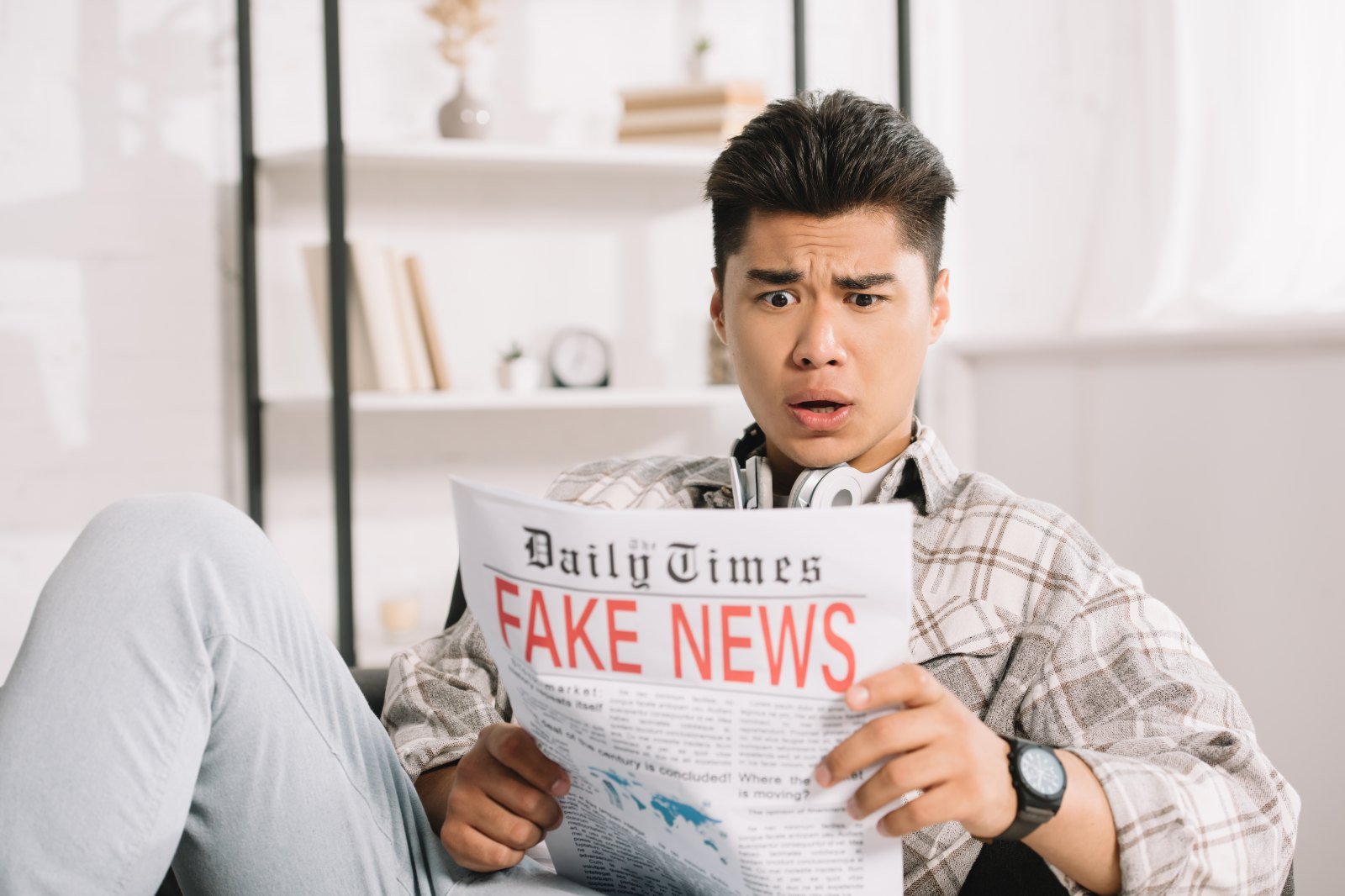
The Protection from Online Falsehoods and Manipulation Act (POFMA) was introduced to combat the spread of false information online that may impact public interest. One of its primary enforcement tools is the Correction Direction, which requires the publication of a correction notice alongside the original content to provide accurate information.
If you have received a Correction Direction, understanding your next steps is important. This article explains what it entails, when it may be issued, and what options are available if you wish to appeal.
What Is A POFMA Correction Direction?
A POFMA Correction Direction is an official order issued to an individual or entity that has disseminated false information affecting public interest.
The directive requires the recipient to publish a correction notice, ensuring that readers have access to accurate information.
More importantly, it does not mandate the removal or alteration of the original content containing the falsehood.
Scenarios That May Result In A Correction Direction

A Correction Direction may be issued if false information has been shared in a way that affects public interest.
This includes matters related to public health, safety, security, and social stability.
For example, false claims about a banking system collapse in Singapore could trigger unnecessary panic, leading to mass withdrawals and economic instability. Similarly, spreading misinformation about an impending terror threat could cause widespread fear and disrupt public order.
Such statements, if proven false and deemed harmful to public interest, may result in a Correction Direction under POFMA to prevent misinformation from inciting undue alarm or affecting national stability.
Recognising the impact of false information helps individuals and organisations stay accountable for the accuracy of the content they share.
What To Do If You Receive A Correction Direction
Upon receiving a Correction Direction, you have two primary options:
Comply With The Correction Direction
If you choose to comply, you must publish a notice that provides either a clarification of the original content or directs readers to the accurate information. This can be done through:
- Posting the correction notice online alongside the original content.
- Publishing the notice in a designated newspaper or other specified print media within Singapore.
It is important to note that a Correction Direction does not require you to remove or alter the original content, it simply mandates that the correction be displayed prominently.
Failure to comply is considered an offence. Under Section 15(1) of the non-compliance act, Individuals who do not adhere to the directive may face a fine of up to S$20,000 and/or imprisonment for up to 12 months. For other cases, the fine can go up to S$500,000.
Appeal The Correction Direction
If you do not wish to comply with a Correction Direction, you have the option to appeal. However, before taking the matter to court, you must first submit an application to the Minister who issued the direction to either:
- Modify the Correction Direction: Request changes to the requirements of the correction notice, such as altering the wording or the manner in which it is displayed.
- Cancel the Correction Direction: Seek a full withdrawal of the directive so that no correction notice needs to be published.
For example, if a Correction Direction was issued regarding a false claim about a banking system collapse, the Minister for Finance would be the issuing authority. Any request to modify or revoke the directive must first be submitted to that Minister.
If the Minister rejects the request, you may then escalate the matter by filing an appeal with the General Division of the High Court. The court will review the directive and decide whether it should be upheld, modified, or overturned.
Appealing To The General Division Of The High Court

If a Correction Direction has been issued and the Minister rejects your request to modify or revoke it, you may escalate the matter by appealing to the General Division of the High Court. This process involves specific legal steps that must be followed carefully to have your appeal considered.
1. Filing The Required Documents
To initiate the appeal, you must submit an originating application along with a supporting affidavit. These documents must comply with the POFMA Rules, outlining the basis of your appeal and the reasons why the Correction Direction should be reconsidered. Accuracy and clarity in these submissions are important, as they form the foundation of your case.
2. Serving Documents To The Attorney-General
Once the appeal is filed, copies of the application and affidavit must be served to the Attorney-General’s Chambers (AGC). This step ensures that the state is informed of the appeal and can prepare its response. Delays or errors in serving these documents could impact the progress of your case.
3. Attending The Court Hearing
After filing and serving the necessary documents, you must attend the scheduled hearing. During this session, both parties—your legal representatives and the state—will present their arguments before the judge. The court will review the case based on the facts, applicable laws, and legal precedents.
If the court rules in your favour, the Correction Direction will be overturned, and you will no longer be required to comply with it.
However, if the appeal is unsuccessful, the directive remains in effect, and failure to comply could lead to penalties, including fines or imprisonment.
Given the legal complexities involved, seeking professional legal advice may be advisable before proceeding with an appeal.
Key Considerations In the Appeal Process

When appealing a Correction Direction, the Court of Appeal follows a structured framework to determine if the directive should be revoked.
This framework consists of five key considerations, each addressing a different aspect of the statement in question.
1. Interpretation Of The Alleged False Statement
Under Section 2(2)(a) of POFMA, the court’s first task is determining how an ordinary, reasonable person would understand the statement. This involves examining the precise wording, the broader context in which it was published, and any underlying implications.
The way a statement is framed, including tone, structure, and accompanying media, can influence interpretation. The court will also consider whether the statement is inherently ambiguous or if it could reasonably be taken to mean something different from what was intended.
2. Nature Of The Statement
The court then determines whether the statement is asserting a fact or expressing an opinion. If a statement is clearly an opinion, commentary, or rhetorical statement, it may not fall within the scope of a Correction Direction.
However, if it is presented as a factual assertion that can be proven true or false, it will be assessed further. The distinction is important because opinions, even if controversial, are typically protected under free speech, whereas false factual claims that mislead the public may warrant corrective action.
Statements blending fact and opinion can be more complex, and the court will examine how an average reader would perceive the information.
3. Falsity Of The Statement
A central question in the appeal is whether the statement is objectively false. The court will consider evidence from credible sources to determine if the information contradicts verifiable facts. If the statement is substantially true, the Correction Direction may be overturned.
4. Communication Within Singapore
For a Correction Direction to be valid, the false statement must have been made accessible within Singapore, as outlined in Section 3(2) of POFMA. This means that the content must have reached an audience within the country, regardless of whether it was first published overseas.
The court will consider factors such as the platform on which the statement was shared, the primary audience it was intended for, and any indications that the content was specifically targeted at Singaporean readers.
If a post was created outside of Singapore but was widely circulated or referenced within the country, it could still be subject to a Correction Direction under POFMA.
5. Public Interest Impact
Finally, the court assesses whether the statement could cause harm or confusion in areas such as public health, safety, national security, or social harmony as stipulated in Section 4 of POFMA.
If the misinformation has a direct or indirect impact on public interest, the Correction Direction is more likely to be upheld.
The responsibility to prove that the directive is unjustified rests on the appellant. This means that the individual or organisation challenging the directive must present clear and compelling evidence to demonstrate that the statement does not meet the criteria for a Correction Direction.
The court will then weigh these arguments before making a final decision on the appeal.
Conclusion On What Is A POFMA Correction Direction And How To Appeal
A POFMA Correction Direction is a legal tool used to address misinformation affecting public interest. While it does not require content removal, it mandates a correction notice.
If you believe the directive is unjustified, you can appeal first to the issuing Minister and, if necessary, to the General Division of the High Court.
Navigating POFMA appeals can be complex, requiring strong legal arguments and evidence. At Tembusu Law, our experienced lawyers provide expert guidance on compliance, appeals, and protecting your rights.
Contact us today for a consultation and expert legal support.
Frequently Asked Questions About What Is A POFMA Correction Direction And How To Appeal
Should A Correction Notice Be Placed In A Specific Location?
The directive will specify where the correction notice must be published. It is typically required to be placed next to the original content or in another visible location to ensure accessibility. Non-compliance with placement requirements may be considered a violation of POFMA.
Are There Any Legal Consequences For Incorrectly Publishing The Correction Notice?
Yes. Failure to comply with the exact terms of the Correction Direction, including incorrect wording or placement, may result in further enforcement action. The authorities may deem it non-compliance and impose penalties. Seeking legal advice can help avoid unintended violations.
When Should An Appeal Be Filed Against A Correction Direction?
An appeal must first be submitted to the issuing Minister within the timeframe stated in the directive. If the Minister rejects the request, a further appeal to the General Division of the High Court must be filed within 14 days of the Minister’s decision. Acting within these time limits is crucial to keep the appeal valid.
Is There A Cost Associated With Filing An Appeal Against A Correction Direction?
Yes. Appealing to the General Division of the High Court involves legal costs, including court filing fees and legal representation expenses. The complexity of the case may also affect the overall costs. Seeking legal guidance can help assess the financial implications before proceeding.